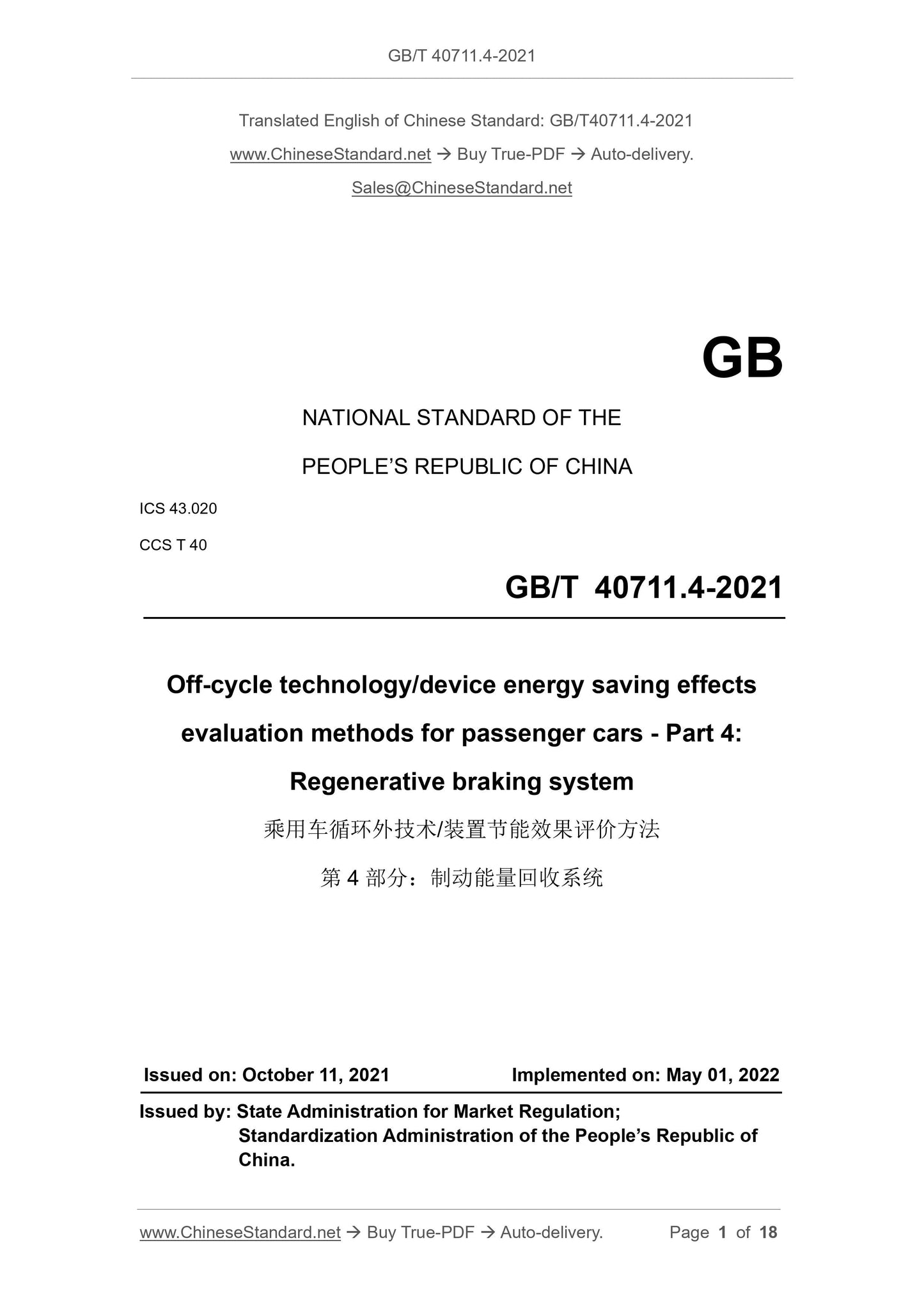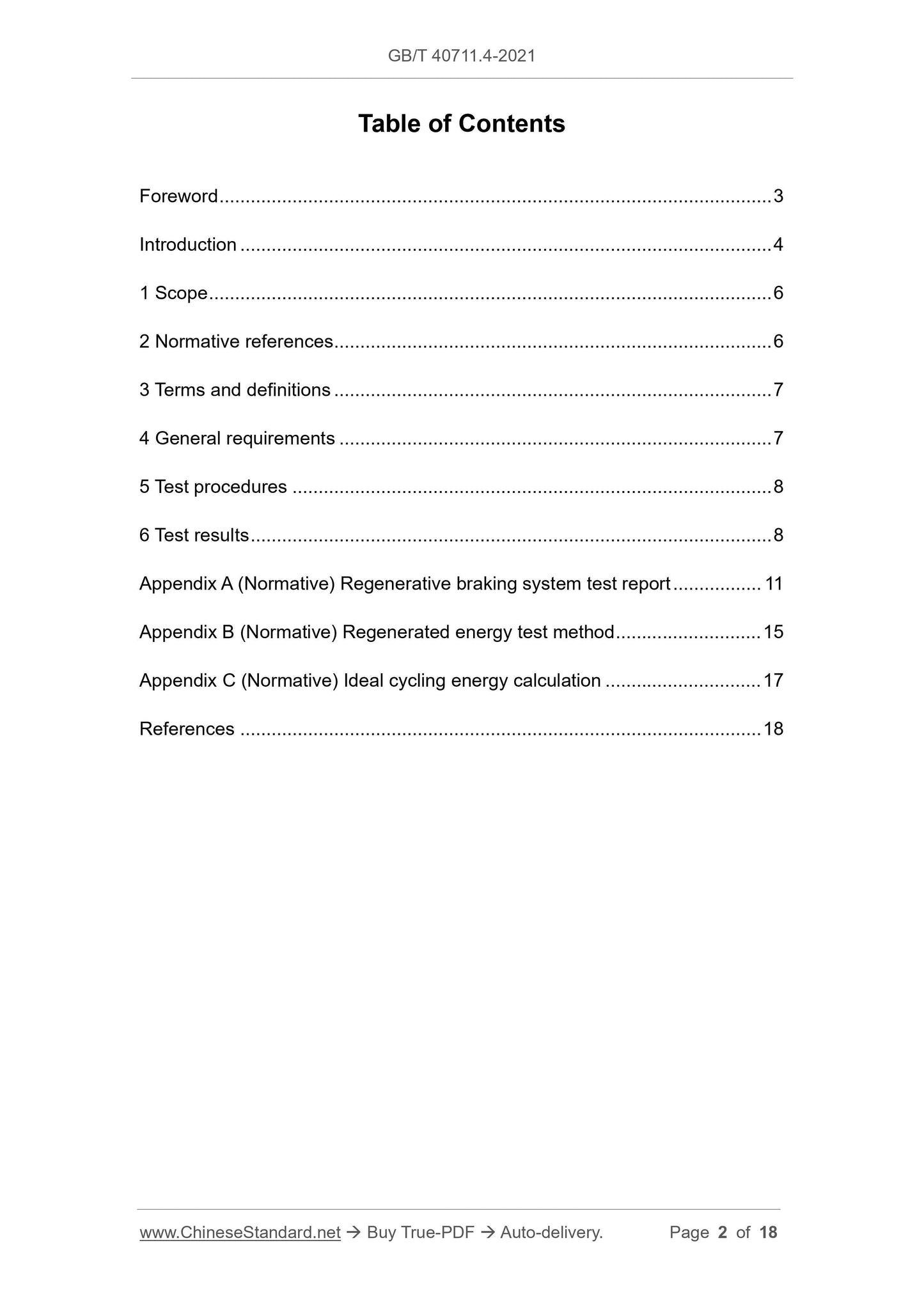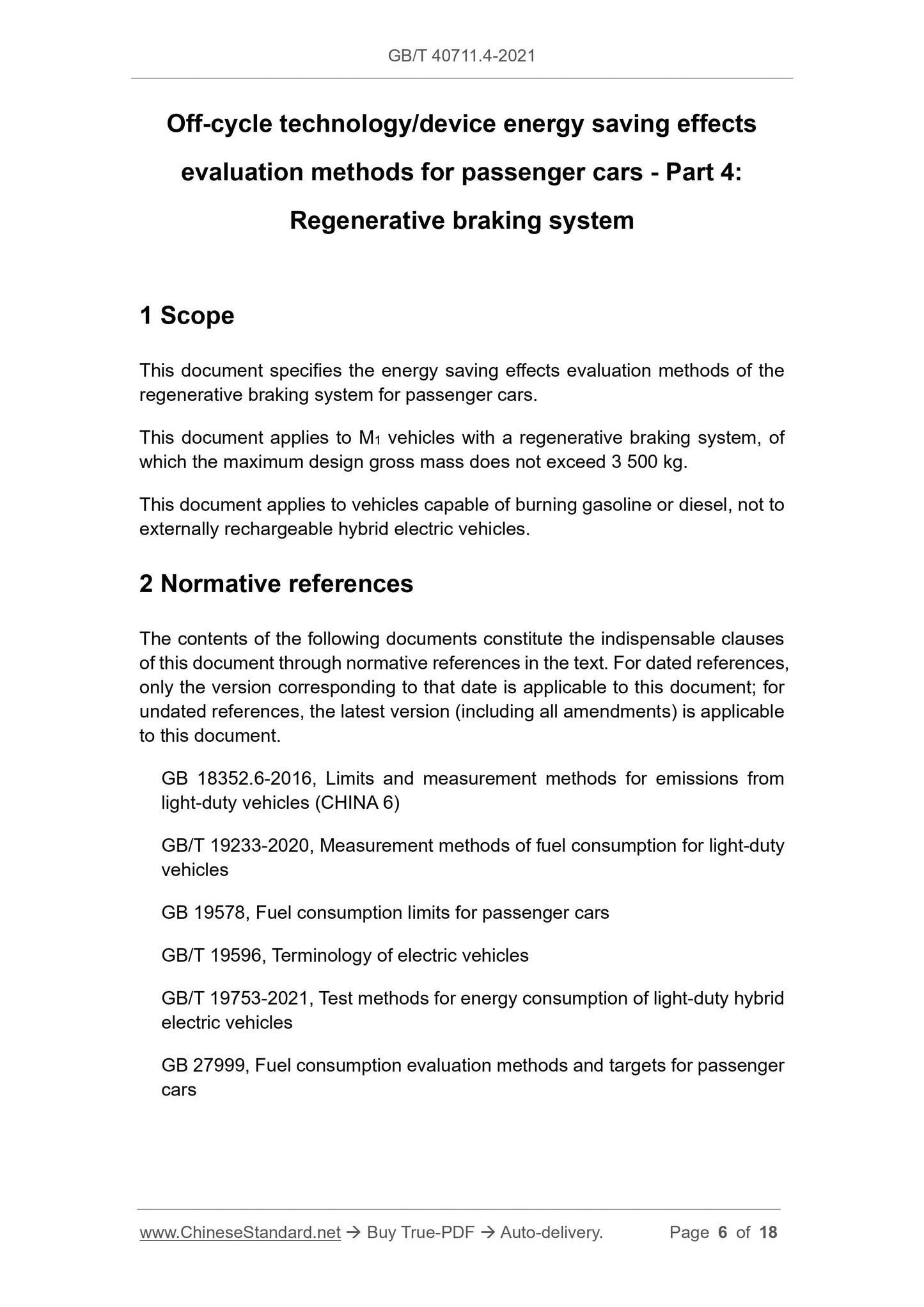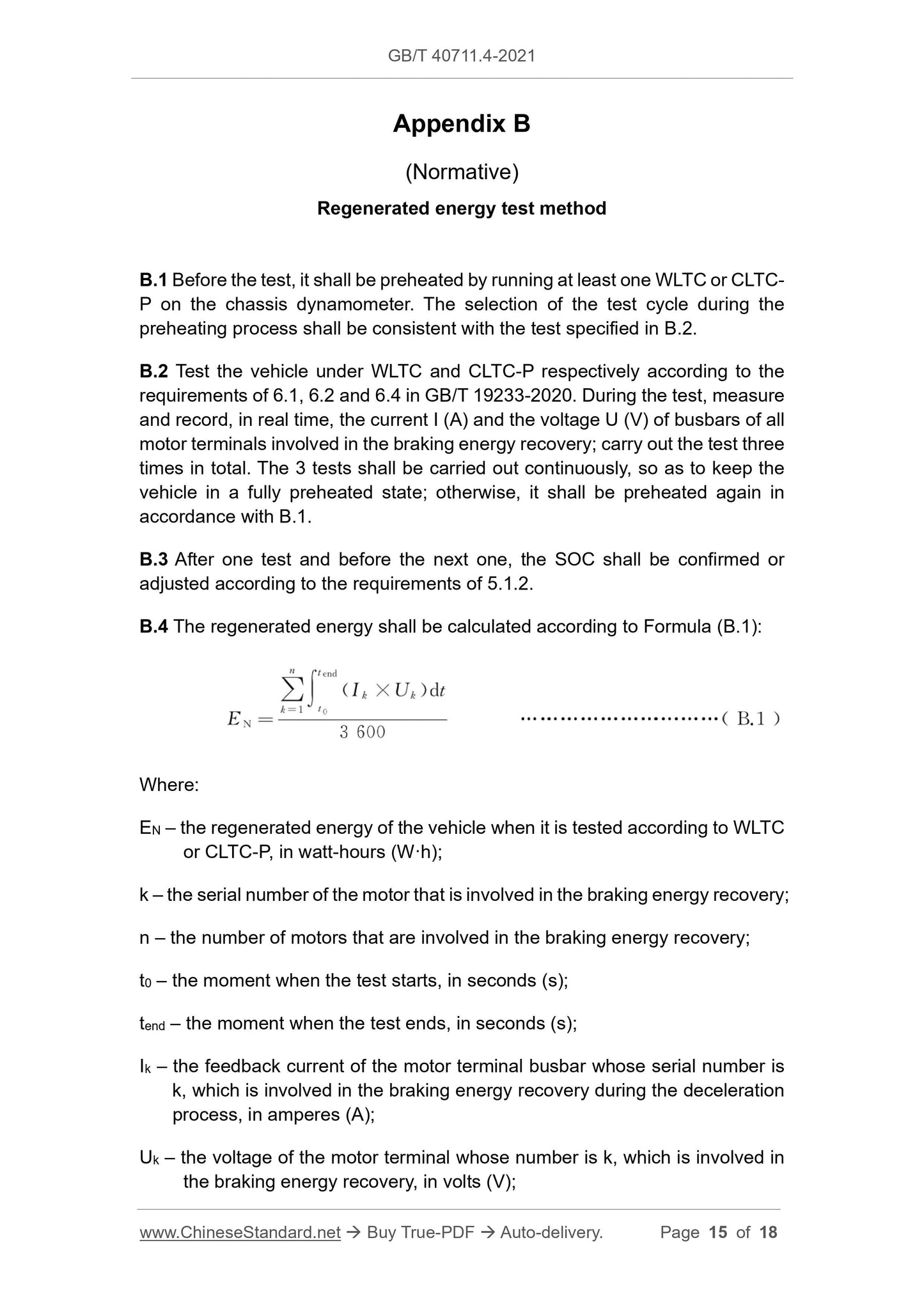1
/
of
5
www.ChineseStandard.us -- Field Test Asia Pte. Ltd.
GB/T 40711.4-2021 English PDF (GB/T40711.4-2021)
GB/T 40711.4-2021 English PDF (GB/T40711.4-2021)
Regular price
$260.00
Regular price
Sale price
$260.00
Unit price
/
per
Shipping calculated at checkout.
Couldn't load pickup availability
GB/T 40711.4-2021: Off-cycle technology/device energy saving effects evaluation methods for passenger cars - Part 4: Regenerative braking system
Delivery: 9 seconds. Download (and Email) true-PDF + Invoice.Get Quotation: Click GB/T 40711.4-2021 (Self-service in 1-minute)
Newer / historical versions: GB/T 40711.4-2021
Preview True-PDF
Scope
This document specifies the energy saving effects evaluation methods of theregenerative braking system for passenger cars.
This document applies to M1 vehicles with a regenerative braking system, of
which the maximum design gross mass does not exceed 3 500 kg.
This document applies to vehicles capable of burning gasoline or diesel, not to
externally rechargeable hybrid electric vehicles.
Basic Data
| Standard ID | GB/T 40711.4-2021 (GB/T40711.4-2021) |
| Description (Translated English) | Off-cycle technology/device energy saving effects evaluation methods for passenger cars - Part 4: Regenerative braking system |
| Sector / Industry | National Standard (Recommended) |
| Classification of Chinese Standard | T40 |
| Word Count Estimation | 14,190 |
| Issuing agency(ies) | State Administration for Market Regulation, China National Standardization Administration |
Share









